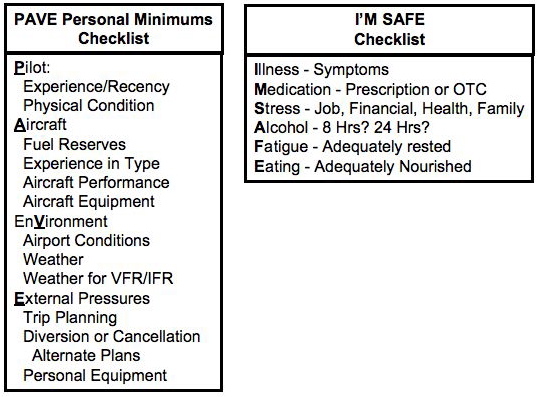Featured Youtube Video
My Latest Instagram Post
Instagram did not return a 200.Categories
- About Me (3)
- Adoptable Pups (1)
- All Things Ava (1)
- Aviation Weather (8)
- Beauty & Fashion (2)
- Business of Aviation (2)
- Child Sexual Abuse (2)
- Cross Country Flying (8)
- Dangerous Drugs (4)
- Dog Rescue (3)
- FAA Dispatcher Exam Prep (3)
- Favorite Things (7)
- Flying Lessons (25)
- Grieving (1)
- Holiday Fun (2)
- Home Decor (2)
- Hotel Reviews (1)
- IFR Written Test (3)
- Inspiration (4)
- Instrument Checkride Preparation (5)
- Legal Marketing (7)
- Life with a Toddler (6)
- Motivation (3)
- Movies (2)
- Music (3)
- Personal Injury Law (6)
- Private Pilot Exam (12)
- Recipes (2)
- Song Meanings (1)
- Taylor Swift (1)
- The Bachelor (1)
- VOR (1)
- Work Travel (1)
Recent Posts
- Save Energy and Save Money ~ Get $10 When you Sign up with OhmConnect!
- 2018 Review: Sheffield School of Aeronautics – Dispatch School in Fort Lauderdale
- Kitchen Table Sanding & Refinishing Project – Dewalt Sander and Minwax Stain
- Pokolodi Lodge Review – Aspen Snowmass, CO
- Aircraft Dispatcher Exam: Lesson Two (Aerodynamics and Aircraft Systems) – Wing Lift Devices
| M | T | W | T | F | S | S |
|---|---|---|---|---|---|---|
| « Jun | ||||||
| 1 | 2 | 3 | 4 | 5 | 6 | 7 |
| 8 | 9 | 10 | 11 | 12 | 13 | 14 |
| 15 | 16 | 17 | 18 | 19 | 20 | 21 |
| 22 | 23 | 24 | 25 | 26 | 27 | 28 |
| 29 | 30 | |||||
Categories
- About Me
- Adoptable Pups
- Aerodynamics and Aircraft Systems
- All Things Ava
- Aviation Weather
- Beauty & Fashion
- Business of Aviation
- Child Sexual Abuse
- Cross Country Flying
- Dangerous Drugs
- Dog Rescue
- FAA Dispatcher Exam Prep
- Favorite Things
- Flying Lessons
- Grieving
- Holiday Fun
- Home Decor
- Hotel Reviews
- IFR Written Test
- Inspiration
- Instrument Checkride Preparation
- Legal Marketing
- Life with a Toddler
- Motivation
- Movies
- Music
- Personal Injury Law
- Private Pilot Exam
- Recipes
- San Bernardino City Shelter
- Song Meanings
- Taylor Swift
- The Bachelor
- VOR
- Wing Lift Devices
- Work Travel
Carlsbad Solo Flight Video and Cross Country Flight Scheduled for Monday
I meant to share this last week, but didn’t get a chance to because I went to Arizona. I went up and did my third solo flight and first solo “out of the pattern” last week. I brought the GoPro along and got this video in my favorite airplane, N9897F, heading out to Bonsall and the Pauma Valley practice area.
My first cross-country flight is scheduled for Monday! I will be flying from my home airport in Carlsbad to William J Fox Airfield (KWJF) in the Antelope Valley – the northern tip of Los Angeles County. I’ve never been to Fox Field and neither has my instructor, so it will be fun to find it using maps, the iPad, GPS, and good ole’ VORS. I’ve been looking forward to cross-country flying since I started and am so excited it is finally happening!
Managing Risk While Flying – The PAVE and I’M SAFE Checklists
Yesterday, I wrote about Single Pilot Resource Management, one of the first things that I anticipate will be discussed in my upcoming stage check. There are six aspects of SRM, they are task management, automation management, risk management, aeronautical decision making, situational awareness, and controlled flight into terrain awareness. Today, I wanted to review more closely Risk Management, and specifically the PAVE and I’M SAFE Checklists
The FAA and my flight school are big on risk management, and they rightly should be. Many aircraft accidents happen because pilots do not identify risks and are caught off-guard by something that could have been anticipated. The FAA recognizes that two pilots with the same certification might have different levels of experience and comfort, and even though they have the same rights to fly, they should have different personal minimum standards. The PAVE checklist addresses personal minimums.
The I’M SAFE checklist addresses the personal minimums of the pilot. Are you sick, medicated, stressed out, under the influence of alcohol, fatigued or tired, and have you eaten recently. If you are worked up about something, running on zero sleep, starving because you haven’t eaten all day, or sick, you shouldn’t fly. Everytime, it is better to be safe than sorry.
Single Pilot Resource Management ~ The 6 Components You Must Remember
 In my upcoming presolo stage check, one of the first topics I know I will be tested on is Single-Pilot Resource Management. After all, I’m going to have to do this when I solo, so I better know what it is. This is the art and science of managing your resources – all by yourself. Resources can be onboard the aircraft and from outside sources. There are six components of SRM. They are:
In my upcoming presolo stage check, one of the first topics I know I will be tested on is Single-Pilot Resource Management. After all, I’m going to have to do this when I solo, so I better know what it is. This is the art and science of managing your resources – all by yourself. Resources can be onboard the aircraft and from outside sources. There are six components of SRM. They are:
Task Management
Automation Management
Risk Management
Aeronautical Decision Making
Situational Awareness
Controlled Flight into Terrain Awareness
 Situational Awareness is taking into consideration all factors such as traffic, weather, fuel state, aircraft mechanical condition, and my own fatigue level that may have an impact on the successful completion of the flight. When I’m flying around, whether it’s local or cross country, I’ve got to manage all the technology in the aircraft as well as radio and navigation tasks. I need to be able to manage risk and make accurate and timely decisions. Sometimes in order to make decisions, I will need to gather information and analyze it. I also need to know what to do in an emergency, such as a radio failure or an engine failure. There might not be one best correct answer as to what to do in a particular situation – or there might be. I’ve got to analyze each situation in light of my experience level, personal minimums, and current physical and mental condition.
Situational Awareness is taking into consideration all factors such as traffic, weather, fuel state, aircraft mechanical condition, and my own fatigue level that may have an impact on the successful completion of the flight. When I’m flying around, whether it’s local or cross country, I’ve got to manage all the technology in the aircraft as well as radio and navigation tasks. I need to be able to manage risk and make accurate and timely decisions. Sometimes in order to make decisions, I will need to gather information and analyze it. I also need to know what to do in an emergency, such as a radio failure or an engine failure. There might not be one best correct answer as to what to do in a particular situation – or there might be. I’ve got to analyze each situation in light of my experience level, personal minimums, and current physical and mental condition.
In life, I have gotten overwhelmed at a number of stressful situations. If I’m overwhelmed when I’m flying, I could panic and completely and totally forget what to do. I might make the wrong decision or a careless mistake that could put my life or the lives of other innocent people on the ground at risk. Flying is serious business. I’ve got to take it seriously and remain cool as a cucumber and calm under pressure, just as any professional badass pilot would do.
Tomorrow night I will talk more about Risk Management, including the PAVE checklist and the I’M SAFE checklist. So much to remember.
Pinnacle Aviation Academy Private Pilot Progress Check Flight Recap
Yesterday, I had my flying progress check with David Lowther, the chief flight instructor at Pinnacle Aviation Academy. It was my first real evaluation of everything I have learned so far, and although it wasn’t perfect, it went pretty well. We started out with a chat in his office, and talked about my goals for becoming a pilot, how I found Pinnacle, and how happy I was with my experience and instructor. Then David asked me some questions about flight and aerodynamics, and although I knew some of the answers, I also realized it there is so much still to learn.
For the progress check, we did a thorough preflight inspection of Zero Eight Zulu, my Cessna 172R, which was a good opportunity for me to ask questions about how things work and specific things I should be looking for when I do my preflight. The engine start went well, and I correctly called the ground ATC and got authorization to taxi. Dave told me I taxi’d the airplane a little bit fast, so I will make extra effort on future flights to take my time down the taxiway, and not be a speed racer. The runup checklist and preflight briefing went great, as did my takeoff. By now I feel pretty comfortable with the whole process from starting the plane to getting in the air. We did a right downwind departure and flew out to Bonsall, where I demonstrated slow flight. That went fine, but I completely forgot about my flaps when recovering from slow flight, so I spent about 30 seconds trying to figure out why the airplane wasn’t speeding up. After that, we flew down along Interstate 15 where I did a forward slip to lose 2,000 feet. Then I did ground reference and flew about Lake Hodges at 2,500 feet. Finally, we headed back to CRQ and did a left base landing.
David said I passed my check and said if I keep coming 2-3 times a week, I should have my solo done within two months, maybe sooner. There were will be another pre-solo stage check, and I very much want to be prepared for that – it would be awful to fail. So, before I forget, here are some of the things I was rusty on in the oral exam portion of the progress check yesterday.
Torque: (1) A resistance to turning or twisting. (2) Forces that produce a twisting or turning motion. (3) In an airplane, the tendancy of the aircraft to turn (roll) in the opposite direction of rotation of the engine and propeller.
Torque Effect: This involves Newton’s Third Law of Physics – for every action, there is an equal and opposite reaction. Applied to the airplane, this means that as the internal engine parts and the propeller are revolving in one direction, an equal force is trying to rotate the airplane in the opposite direction. It is greatest when at low airspeeds with high power settings and a high angle of attack.
Adverse Yaw: When turning an airplane to the left for example the downward deflected aileron on the right produces more lift on the right wing. Since the downward deflected right aileron produces more lift, it also produces more drag, while the opposite left aileron has less lift and less drag. This added drag attempts to pull or veer the airplane’s nose in the direction of the raised wing (right); that is it tries to turn the airplane in the direction opposite to that desired. This undesired veering is referred to as adverse yaw.
Obviously, there is much more to learn for my private pilot exam and checkride, but those were the big takeaways from yesterday. I also need to go over the many types of drag, but I’ll save that for another blog post.


